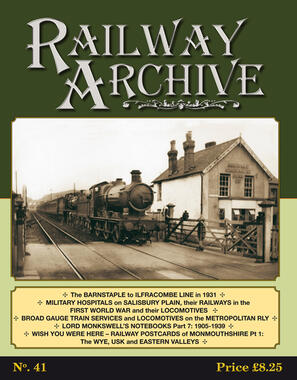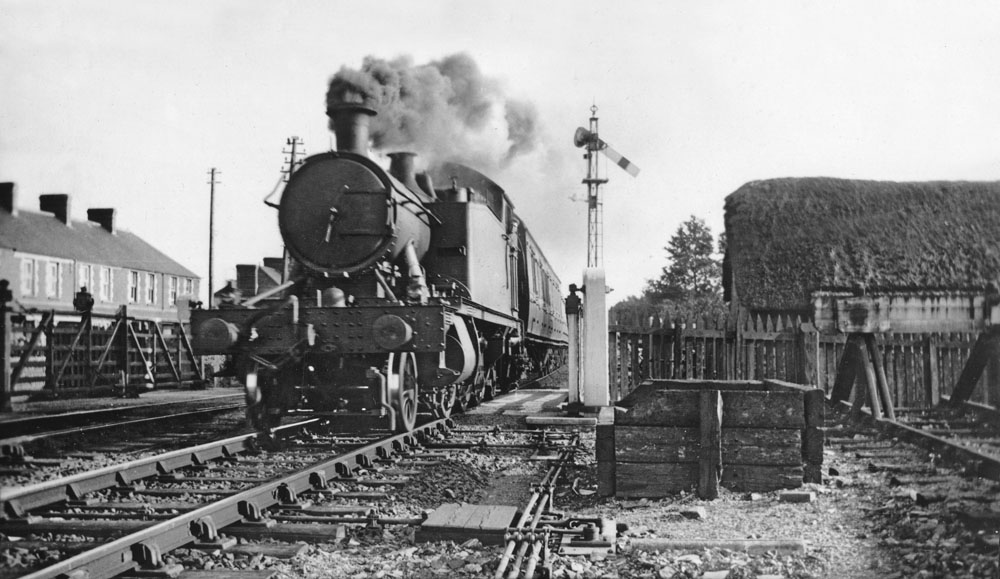Railway Archive Issue 41

Railway Archive Issue 41
80 pages. 275x215mm. .
ISSN 1477-5336 41
£8.25
80 pages. 275x215mm. .
ISSN 1477-5336 41
£8.25
Contents: The Barnstaple to Ilfracombe Line in 1931 - The Brian Perkes Archive by Neil Parkhouse, p3; Military Hospitals on Salisbury Plain, their Railways in the First World War and their Locomotives by Bill Aves, p29; Broad Gauge Train Services and Locomotives on the Metropolitan Railway by The Reverend Canon Brian Arman, p47; Lord Monkswell’s Notebooks Pt 7: Book 3: 1905-1919; Book 5: 1933-39 by Edward Talbot, p57; ‘Down Postal’, p66; Wish You Were Here? Railway Postcards of Monmouthshire Pt 1: Wye, Usk & Eastern Valleys Lines by John Alsop & Neil Parkhouse, p67

Railway Archive Issue 41 - Sample Images

From 'The Barnstaple to Ilfracombe Line in 1931' : A GWR train for Ilfracombe passes over Braunton Gates crossing, with ‘45XX’ Class 2-6-2T No. 5535 in charge. These trains would not stop to pick up passengers but would halt if a banker were required. Through GWR workings – as opposed to the carriages simply being worked forward by the SR – had begun in 1925, coinciding with the upgrading of the route to main line status and the provision of a larger turntable at Ilfracombe. Presumably, the general increase in traffic and the need for banking and pilot engines on the line put a strain on the resources of Barnstaple Junction shed, so it would have been seen as a simple solution by the Southern for the GWR to work its own trains at busy times, such as summer Saturdays. The first twenty of these popular and attractive ‘Prairie’ tanks were constructed at Wolverhampton in 1906-08, the last locomotives to be built there; all subsequent batches, up to the final thirty in 1928-29, were built at Swindon. No. 5535 was one of the penultimate batch, being completed in June 1928. These later builds were also fitted with larger slope-topped side tanks of 1,300 gallons capacity. No. 5535 was to be an early casualty amongst these later series engines, being withdrawn in June 1957.
